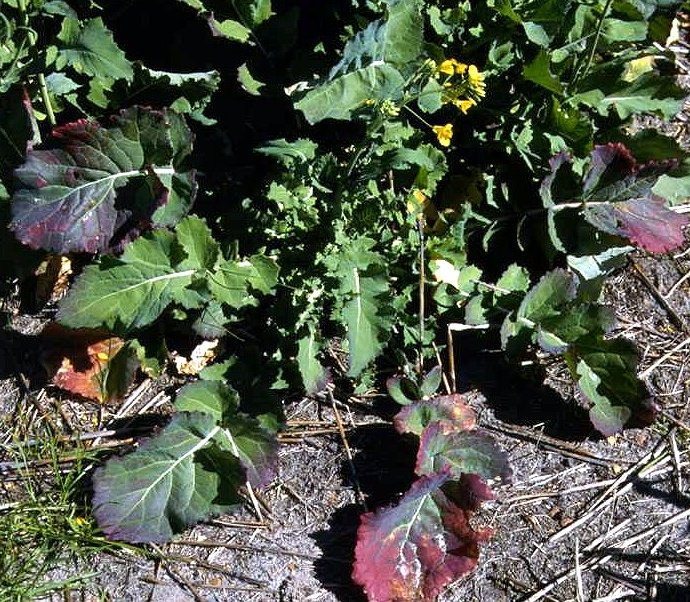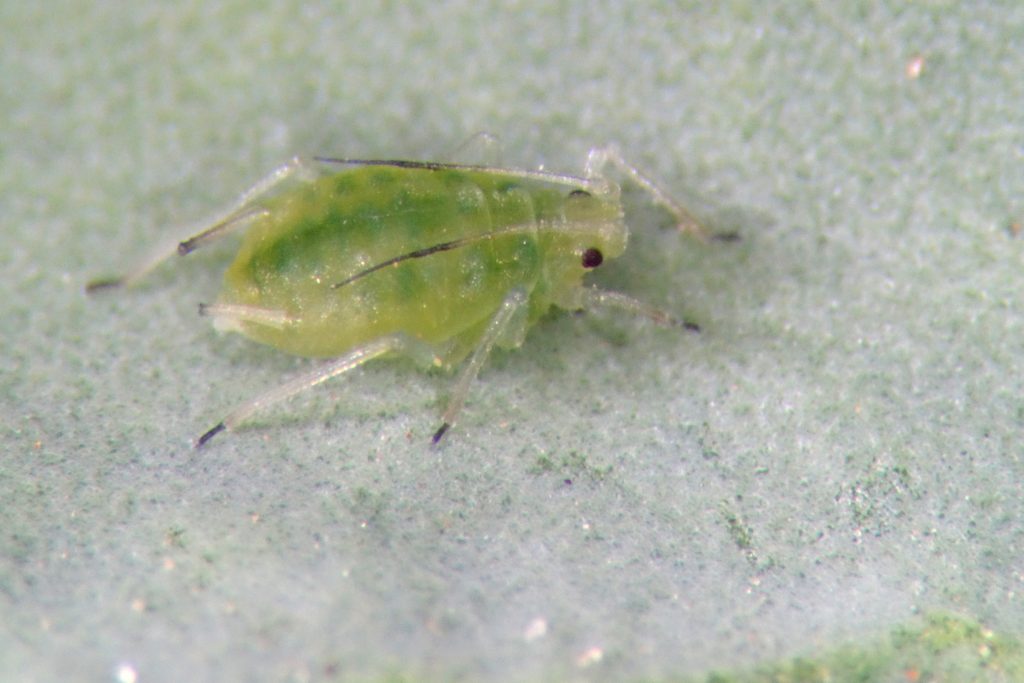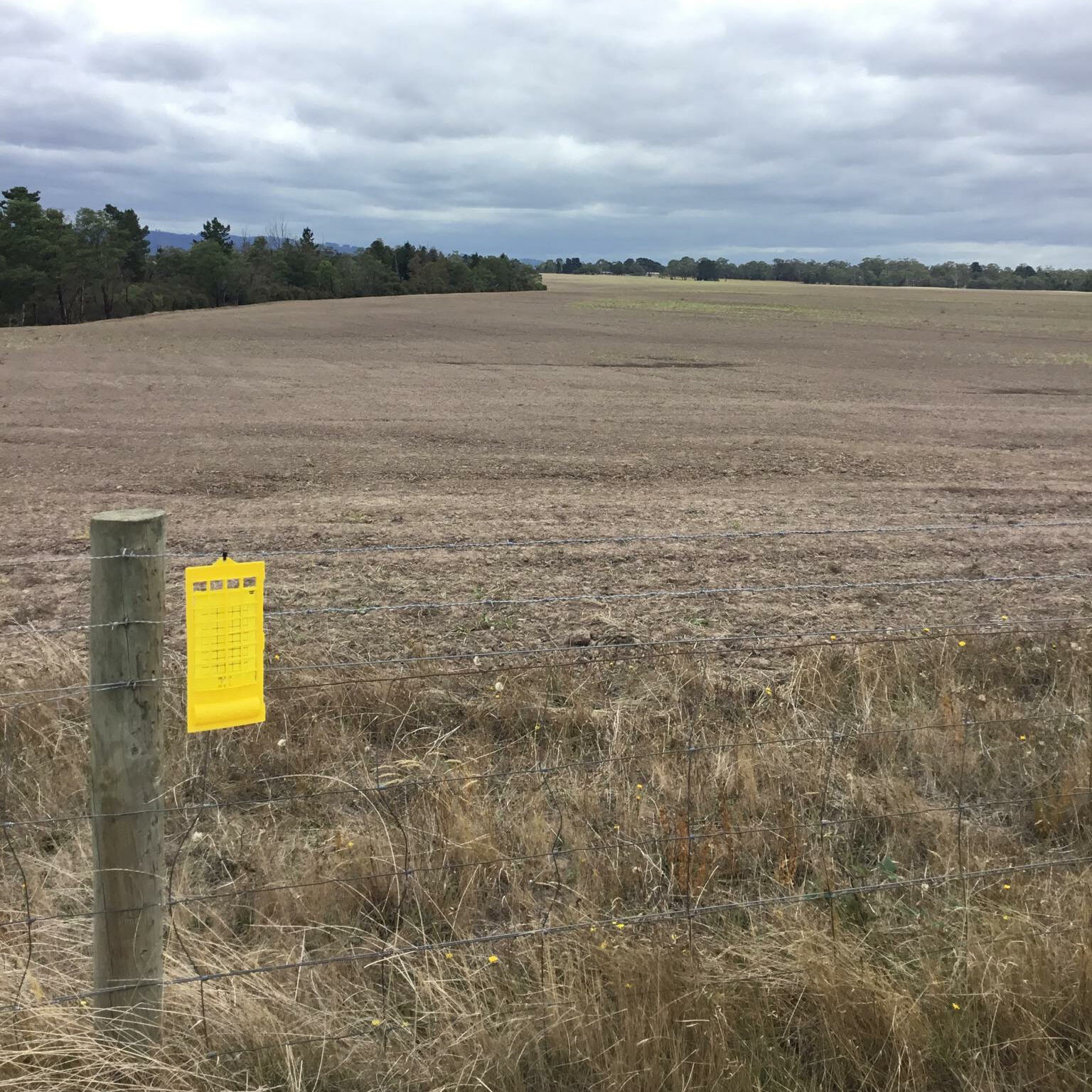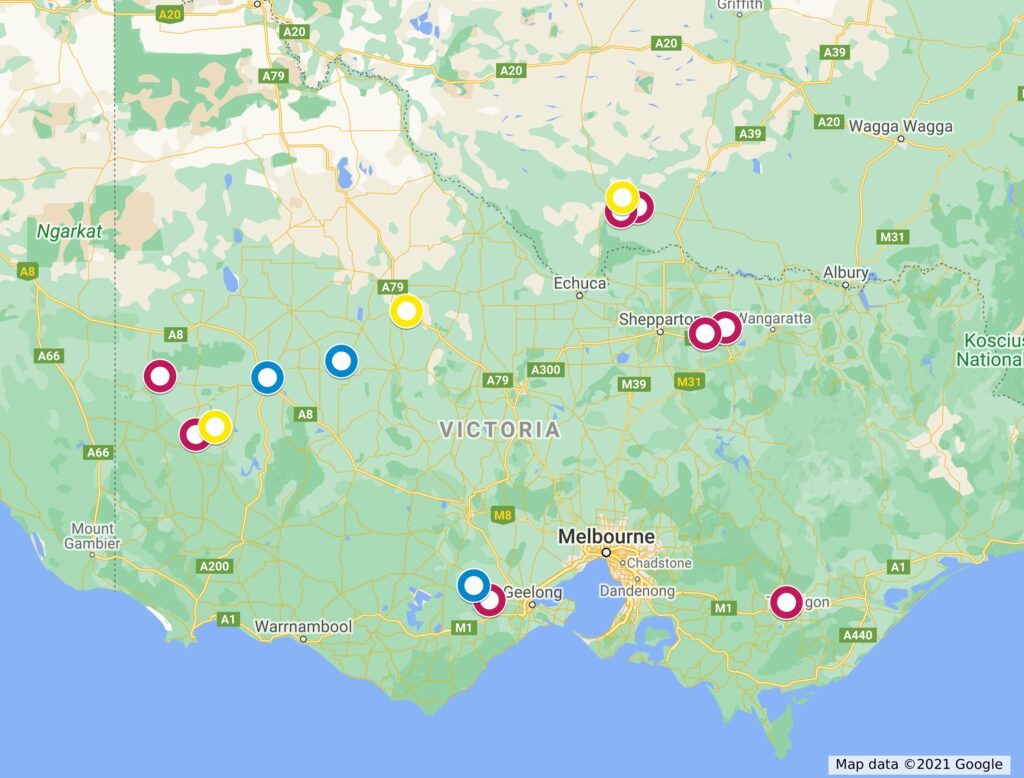An early warning system run by Department of Primary Industries and Regional Development (DPIRD) and Cesar Australia has detected turnip yellows virus in winged aphids caught on sticky traps across a number of sites in Victoria and southern NSW.
In this article we give an overview of the virus and what we know so far concerning its presence in south-eastern Australia.
Overview of turnip yellows virus
Turnip yellows virus (TuYV, formerly known as beet western yellows virus) is primarily spread by green peach aphids. It is carried within the aphid and transmitted to healthy plants during feeding for the entire lifecycle of the aphids.
TuYV is difficult to manage because chemical treatments do not work post-infection as they do with fungal diseases. Therefore, prevention of infection via monitoring and control of green peach aphid is the best defence.

TuYV is a serious disease of canola, most recently causing extensive crop losses during a outbreak in 2018 when crops were infected during the seedling stage of development. The virus can also infect mustard, chickpea, lupin, lentil, faba bean, field pea, lucerne, medic and subterranean clover.
TuYV infection causes plant stunting, reddening, yellowing and stiffing of lower leaves. However, these symptoms are not always indicative of TuYV; they are similar to the physical signs of nutrient disorders or physiological stress.
For more information on how TuYV can affect canola see this article from DPIRD.
Green peach aphids as vectors
The principal vector of TuYV is the green peach aphid, which has a very high (96%) transmission efficiency.
Green peach aphid is widespread across Australia and is common in many broadacre crops (canola and pulses), broadleaf pastures and horticultural crops. The adults vary in colour from shiny pale yellow-green, green, orange or pink and are generally found on the underside of leaves.
For more information on how to identify green peach aphid see our PestNotes.
Mild temperatures in March and April provide optimal conditions for green peach aphid to multiply and potentially spread TuYV from volunteer canola and brassica weeds to this season’s crops. The virus is also thought to be more prevalent in wetter than average years because of the increased risk of aphids entering seedling crops from green bridges.
Unfortunately, green peach aphids have evolved resistance to many insecticide chemicals, making them difficult to control.
More information about insecticide resistance in green peach aphid.

Research into a TuYV early warning system
A proactive approach to manage green peach aphid and TuYV is essential for limiting the impact of this virus. DPIRD and Cesar Australia are currently testing an early warning system to support proactive management of TuYV epidemics in Australian canola crops.
As part of the program, agronomists throughout Western Australia, Victoria and southern NSW deploy sticky traps which are regularly sent to DPIRD to be checked for green peach aphid. If aphids are present, they are tested for TuYV using a rapid and sensitive RNA detection technique. The project also includes leaf sampling at the end of the trial when the canola crop is at GS30 (stem elongation) to assess levels of virus infection.

This research project currently includes the deployment of sticky traps at 16 locations in Victoria and southern NSW (compared with 13 in 2020).
Although trapping is in its early stages, a high prevalence of the virus has already been detected from sticky traps this year, with large numbers of aphids (including green peach aphids) caught and TuYV present at 8 of the 11 sites tested so far (red circles in the map below).
This is compared with 2020 where the virus was only detected at significant levels at three locations during the entire season.

Red = TuYV detected, Blue = no TuYV detected. Yellow = still to be tested.
Map via Google MyMaps
Keep an eye out for green peach aphid
These early results show that there is likely to be a higher prevalence of TuYV this year compared with 2020. These detections are a reminder to get out and check canola crops for signs of early green peach aphid colonisation and symptoms of virus. It is important to monitor seedling crops until the rosette stage.
If you do notice green peach aphids, or possible evidence of TuYV, and would like to have your plants tested, you can arrange for testing through Agriculture Victoria or NSW DPI.
More information on how to manage TuYV:
DPIRD Turnip yellows virus information
Acknowledgements
This research is part of the DIPRID Boosting Grains project 2019SP02, led by DPIRD research scientist Dr Ben Congdon in collaboration with Cesar Australia, and is also supported through the Grains Research and Development Corporation. This PestFacts article was informed by the TuYV DPIRD factsheet.
Many thanks to Dr Marielle Babineau, Dr Ben Congdon and Assoc. Prof. Paul Umina for their assistance in developing this article.
Cover image: Photo by Agriculture Victoria





